- Home
- Virginia Woolf
Mrs. Dalloway
Mrs. Dalloway Read online
Table of Contents
Title Page
Table of Contents
Maps
Copyright
Preface: Virginia Woolf
Chronology
Introduction
Mrs. Dalloway
Notes To Mrs. Dalloway
Suggestions for Further Reading: Virginia Woolf
Suggestions for Further Reading: Mrs. Dalloway
About the Author
Footnotes
Copyright 1925 by Harcourt, Inc.
Copyright renewed 1953 by Leonard Woolf
Annotated Edition copyright © 2005 by Harcourt, Inc.
Preface copyright © 2005 by Mark Hussey
Introduction copyright © 2005 by Bonnie Kime Scott
All rights reserved. No part of this publication may be reproduced or transmitted in any form or by any means, electronic or mechanical, including photocopy, recording, or any information storage and retrieval system, without permission in writing from the publisher.
For information about permission to reproduce selections from this book, write to Permissions, Houghton Mifflin Harcourt Publishing Company, 215 Park Avenue South, New York, New York 10003.
www.hmhco.com
The Library of Congress has cataloged the print edition as follows:
Woolf, Virginia, 1882–1941.
Mrs. Dalloway/Virginia Woolf; annotated and with an introduction
by Bonnie Kime Scott; Mark Hussey, general editor.—1st Harvest ed.
p. cm.—(A Harvest Book)
Includes bibliographical references.
1. Triangles (Interpersonal relations)—Fiction. 2. Middle aged women—Fiction. 3. London (England)—Fiction. 4. Suicide victims—Fiction. 5. Married women— Fiction. 6. First loves—Fiction. 7. Parties—Fiction. 8. Regret—Fiction.
I. Scott, Bonnie Kime, 1944— II. Title. III. Series.
PR6045.O72M7 2005
823'.912-dc22 2005003378
ISBN 978-0-15-603035-9
eISBN 978-0-544-3503-9
v1.0215
PREFACE: VIRGINIA WOOLF
VIRGINIA WOOLF was born into what she once described as “a very communicative, literate, letter writing, visiting, articulate, late nineteenth century world.” Her parents, Leslie and Julia Stephen, both previously widowed, began their marriage in 1878 with four young children: Laura (1870–1945), the daughter of Leslie Stephen and his first wife, Harriet Thackeray (1840–1875); and George (1868–1934), Gerald (1870–1937), and Stella Duckworth (1869–1897), the children of Julia Prinsep (1846–1895) and Herbert Duckworth (1833–1870). In the first five years of their marriage, the Stephens had four more children. Their third child, Virginia, was born in 1882, the year her father began work on the monumental Dictionary of National Biography that would earn him a knighthood in 1902. Virginia, her sister, Vanessa (1879–1961), and brothers, Thoby (1880–1906) and Adrian (1883–1948), all were born in the tall house at 22 Hyde Park Gate in London where the eight children lived with numerous servants, their eminent and irascible father, and their beautiful mother, who, in Woolf’s words, was “in the very centre of that great Cathedral space that was childhood.”
Woolf’s parents knew many of the intellectual luminaries of the late Victorian era well, counting among their close friends novelists such as George Meredith, Thomas Hardy, and Henry James. Woolf’s great-aunt Julia Margaret Cameron was a pioneering photographer who made portraits of the poets Alfred Tennyson and Robert Browning, of the naturalist Charles Darwin, and of the philosopher and historian Thomas Carlyle, among many others. Beginning in the year Woolf was born, the entire Stephen family moved to Talland House in St. Ives, Cornwall, for the summer. There the younger children would spend their days playing cricket in the garden, frolicking on the beach, or taking walks along the coast, from where they could look out across the bay to the Godrevy lighthouse.
The early years of Woolf’s life were marred by traumatic events. When she was thirteen, her mother, exhausted by a punishing schedule of charitable visits among the sick and poor, died from a bout of influenza. Woolf’s half sister Stella took over the household responsibilities and bore the brunt of their self-pitying father’s sorrow until she escaped into marriage in 1897 with Jack Hills, a young man who had been a favorite of Julia’s. Within three months, Stella (who was pregnant) was dead, most likely from peritonitis. In this year, which she called “the first really lived year of my life,” Woolf began a diary. Over the next twelve years, she would record in its pages her voracious reading, her impressions of people and places, feelings about her siblings, and events in the daily life of the large household.1
In addition to the premature deaths of her mother and half sister, there were other miseries in Woolf’s childhood. In autobiographical writings and letters, Woolf referred to the sexual abuse she suffered at the hands of her two older half brothers, George and Gerald Duckworth. George, in one instance, explained his behavior to a family doctor as his effort to comfort his half sister for the fatal illness of their father. Sir Leslie died from cancer in 1904, and shortly thereafter the four Stephen children—Vanessa, Virginia, Thoby, and Adrian—moved together to the then-unfashionable London neighborhood of Bloomsbury. When Thoby Stephen began to bring his Cambridge University friends to the house on Thursday evenings, what would later become famous as the “Bloomsbury Group” began to form.
In an article marking the centenary of her father’s birth, Woolf recalled his “allowing a girl of fifteen the free run of a large and quite unexpurgated library”—an unusual opportunity for a Victorian young woman, and evidence of the high regard Sir Leslie had for his daughter’s intellectual talents. In her diary, she recorded the many different kinds of books her father recommended to her—biographies and memoirs, philosophy, history, and poetry. Although he believed that women should be “as well educated as men,” Woolf’s mother held that “to serve is the fulfilment of women’s highest nature.” The young Stephen children were first taught at home by their mother and father, with little success. Woolf herself received no formal education beyond some classes in Greek and Latin in the Ladies’ Department of King’s College in London, beginning in the fall of 1897. In 1899 she began lessons in Greek with Clara Pater, sister of the renowned Victorian critic Walter Pater, and in 1902 she was tutored in the classics by Janet Case (who also later involved her in work for women’s suffrage). Such homeschooling was a source of some bitterness later in her life, as she recognized the advantages that derived from the expensive educations her brothers and half brothers received at private schools and university. Yet she also realized that her father’s encouragement of her obviously keen intellect had given her an eclectic foundation. In the early years of Bloomsbury, she reveled in the opportunity to discuss ideas with her brother Thoby and his friends, among whom were Lytton Strachey, Clive Bell, and E. M. Forster. From them, she heard, too, about an intense young man named Leonard Woolf, whom she had met briefly when visiting Thoby at Cambridge, and also in 1904 when he came to dinner at Gordon Square just before leaving for Ceylon (now called Sri Lanka), where he was to administer a far-flung outpost of the British Empire.
Virginia Woolf’s first publications were unsigned reviews and essays in an Anglo-Catholic newspaper called the Guardian, beginning in December 1904. In the fall of 1906, she and Vanessa went with a family friend, Violet Dickinson, to meet their brothers in Greece. The trip was spoiled by Vanessa’s falling ill, and when she returned to London, Virginia found both her brother Thoby—who had returned earlier—and her sister seriously ill. After a misdiagnosis by his doctors, Thoby died from typhoid fever on November 20, leaving Virginia to maintain a cheerful front while her sister and Violet Dickinson recovered from their own illnesses. Two days after Thoby’s death, Vane
ssa agreed to marry his close friend Clive Bell.
While living in Bloomsbury, Woolf had begun to write a novel that would go through many drafts before it was published in 1915 as The Voyage Out. In these early years of independence, her social circle widened. She became close to the art critic Roger Fry, organizer of the First Post-Impressionist Exhibition in London in 1910, and also entered the orbit of the famed literary hostess Lady Ottoline Morrell (cruelly caricatured as Hermione Roddice in D. H. Lawrence’s 1920 novel Women in Love). Her political consciousness also began to emerge. In 1910 she volunteered for the movement for women’s suffrage. She also participated that February in a daring hoax that embarrassed the British Navy and led to questions being asked in the House of Commons: She and her brother Adrian, together with some other Cambridge friends, gained access to a secret warship by dressing up and posing as the Emperor of Abyssinia and his retinue. The “Dreadnought Hoax” was front-page news, complete with photographs of the phony Ethiopians with flowing robes, blackened faces, and false beards.
To the British establishment, one of the most embarrassing aspects of the Dreadnought affair was that a woman had taken part in the hoax. Vanessa Bell was concerned at what might have happened to her sister had she been discovered on the ship. She was also increasingly worried about Virginia’s erratic health, and by the early summer 1910 had discussed with Dr. George Savage, one of the family’s doctors, the debilitating headaches her sister suffered; Dr. Savage prescribed several weeks in a nursing home. Another element in Vanessa’s concern was that Virginia was twenty-eight and still unmarried. Clive Bell and Virginia had, in fact, engaged in a hurtful flirtation soon after the birth of Vanessa’s first child in 1908. Although she had been proposed to twice in 1909 and once in 1911, Virginia had not taken these offers very seriously.
Dropping by Vanessa’s house on a July evening in 1911, Virginia met Leonard Woolf, recently back on leave from Ceylon. Soon after this, Leonard became a lodger at the house Virginia shared with Adrian, the economist John Maynard Keynes, and the painter Duncan Grant. Leonard decided to resign from the Colonial Service, hoping that Virginia would agree to marry him. After some considerable hesitation, she did, and they married in August 1912.
By the end of that year, Woolf was again suffering from the tremendous headaches that afflicted her throughout her life, and in 1913 she was again sent to a nursing home for what was then called a “rest cure.” In September of that year, she took an overdose of a sleeping drug and was under care until the following spring. In early 1915 she suffered a severe breakdown and was ill throughout most of the year in which her first novel was published.
Despite this difficult beginning, Virginia and Leonard Woolf’s marriage eventually settled into a pattern of immense productivity and mutual support. Leonard worked for a time for the Women’s Cooperative Guild, and became increasingly involved with advising the Labour Party and writing on international politics, as well as editing several periodicals. Virginia began to establish herself as an important novelist and influential critic. In 1917 the Woolfs set up their own publishing house, the Hogarth Press, in their home in Richmond. Their first publication was Two Stories—Leonard’s “Three Jews” and Virginia’s experimental “The Mark on the Wall.” They had decided to make their livings by writing, and in 1919, a few months before Woolf’s second novel, Night and Day, was published, they bought a cottage in the village of Rodmell in Sussex. After moving back into London from Richmond in 1923, Woolf would spend summers at Monk’s House, returning to the social whirl of the city in the fall.
“The Mark on the Wall” was one of a number of what Woolf called “sketches” that she began to write around the time she and Leonard bought their printing press. Night and Day was the last of her books to be published in England by another press. In 1919 Hogarth published her short story Kew Gardens, with two woodcuts by Vanessa Bell, and two years later came Monday or Tuesday, the only collection of her short fiction published in Woolf’s lifetime. Her next novel was Jacob’s Room (1922), a slim elegy to the generation of 1914, and to her beloved brother Thoby, whose life of great promise had also been cut short so suddenly. Woolf had written to her friend Margaret Llewelyn Davies in 1916 that the Great War, as it was then called, was a “preposterous masculine fiction” that made her “steadily more feminist,” and in her fiction and nonfiction she began to articulate and illuminate the connections between the patriarchal status quo, the relatively subordinate position of women, and war making. Thinking about a novel she was calling “The Hours,” Woolf wrote in her diary in 1923 that she wanted to criticize “the social system.” Her inclusion in the novel of a shell-shocked war veteran named Septimus Warren Smith would confuse many of the early reviewers of her fourth novel, Mrs. Dalloway (1925), but others recognized that Woolf was breaking new ground in the way she rendered consciousness and her understanding of human subjectivity.
By the time she wrote Mrs. Dalloway, Woolf was also a sought-after essayist and reviewer who, like many of her celebrated contemporaries, was staking out her own particular piece of modernist territory. The Hogarth Press published radical young writers like Katherine Mansfield, T. S. Eliot, and Gertrude Stein. Approached by Harriet Shaw Weaver with part of the manuscript of James Joyce’s Ulysses in 1918, the Woolfs turned it down. Their own small press could not cope with the long and complex manuscript, nor could Leonard Woolf find a commercial printer willing to risk prosecution for obscenity by producing it. In 1924 the Hogarth Press became the official English publisher of the works of Sigmund Freud, translated by Lytton Strachey’s brother James. Woolf’s own literary criticism was collected in a volume published in 1925, The Common Reader—a title signaling her distrust of academics and love of broad, eclectic reading.
The staggering range of Woolf’s reading is reflected in the more than five hundred essays and reviews she published during her lifetime. Her critical writing is concerned not only with the canonical works of English literature from Chaucer to her contemporaries, but also ranges widely through lives of the obscure, memoirs, diaries, letters, and biographies. Models of the form, her essays comprise a body of work that has only recently begun to attract the kind of recognition her fiction has received.
In 1922 Woolf met “the lovely and gifted aristocrat” Vita Sackville-West, already a well-known poet and novelist. Their close friendship slowly turned into a love affair, glowing most intensely from about 1925 to 1928, before modulating into friendship once more in the 1930s. The period of their intimacy was extremely creative for both writers, Woolf publishing essays such as “Mr. Bennett and Mrs. Brown” and “Letter to a Young Poet,” as well as three very different novels: To the Lighthouse (1927), which evoked her own childhood and had at its center the figure of a modernist woman artist, Lily Briscoe; Orlando (1928), a fantastic biography inspired by Vita’s own remarkable family history; and The Waves (1931), a mystical and profoundly meditative work that pushed Woolf’s concept of novel form to its limit. Woolf also published a second Common Reader in 1932, and the “biography” of Flush, Elizabeth Barrett Browning’s dog (1933). She went with Sackville-West to Cambridge in the fall of 1928 to deliver the second of the two lectures on which her great feminist essay A Room of One’s Own (1929) is based.
As the political situation in Europe in the 1930s moved inexorably to its crisis in 1939, Woolf began to collect newspaper clippings about the relations between the sexes in England, France, Germany, and Italy. The scrapbooks she made became the matrix from which developed the perspectives of her penultimate novel, The Years (1937), and the arguments of her pacifist-feminist polemic Three Guineas (1938). In 1937 Vanessa’s eldest son, Julian Bell, was killed serving as an ambulance driver in the Spanish Civil War. Woolf later wrote to Vanessa that she had written Three Guineas partly as an argument with Julian. Her work on The Years was grindingly slow and difficult. Ironically, given Woolf’s reputation as a highbrow, it became a bestseller in the United States, even being published in an Armed Services edition
. While she labored over the novel in 1934, the news came of the death of Roger Fry, one of her oldest and closest friends and the former lover of her sister, Vanessa. Reluctantly, given her distaste for the conventions of biography, Woolf agreed to write his life, which was published in 1940.
In 1939, to relieve the strain of writing Fry’s biography, Woolf began to write a memoir, “A Sketch of the Past,” which remained unpublished until 1976, when the manuscripts were edited by Jeanne Schulkind for a collection of Woolf’s autobiographical writings, Moments of Being. Withdrawing with Leonard to Monk’s House in Sussex, where they could see the German airplanes flying low overhead on their way to bomb London, Woolf continued to write for peace and correspond with antiwar activists in Europe and the United States. She began to write her last novel, Between the Acts, in the spring of 1938, but by early 1941 was dissatisfied with it. Before completing her final revisions, Woolf ended her own life, walking into the River Ouse on the morning of March 28, 1941. To her sister, Vanessa, she wrote, “I can hardly think clearly any more. If I could I would tell you what you and the children have meant to me. I think you know.” In her last note to Leonard, she told him he had given her “complete happiness,” and asked him to destroy all her papers.
BY THE END of the twentieth century, Virginia Woolf had become an iconic figure, a touchstone for the feminism that revived in the 1960s as well as for the conservative backlash of the 1980s. Hailed by many as a radical writer of genius, she has also been dismissed as a narrowly focused snob. Her image adorns T-shirts, postcards, and even a beer advertisement, while phrases from her writings occur in all kinds of contexts, from peace-march slogans to highbrow book reviews. That Woolf is one of those figures upon whom the myriad competing narratives of twentieth- and twenty-first-century Western culture inscribe themselves is testified to by the enormous number of biographical works about her published in the decades since her nephew Quentin Bell broke the ground in 1972 with his two-volume biography of his aunt.

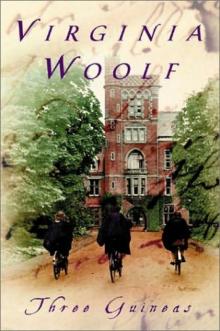 Three Guineas
Three Guineas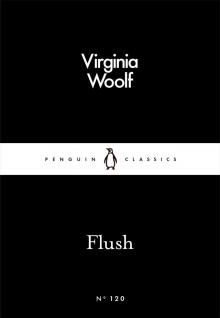 Flush
Flush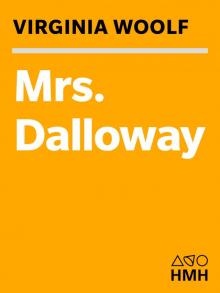 Mrs. Dalloway
Mrs. Dalloway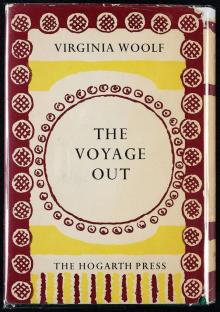 The Voyage Out
The Voyage Out A Writer's Diary: Being Extracts From the Diary of Virginia Woolf
A Writer's Diary: Being Extracts From the Diary of Virginia Woolf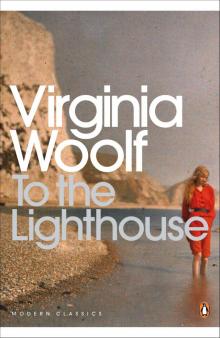 To The Lighthouse
To The Lighthouse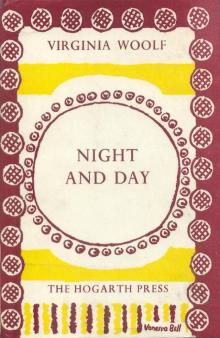 Night and Day
Night and Day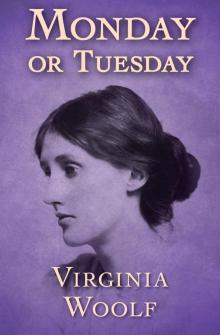 Monday or Tuesday
Monday or Tuesday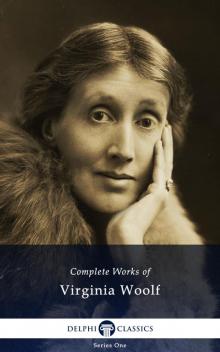 Complete Works of Virginia Woolf
Complete Works of Virginia Woolf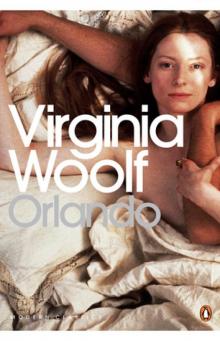 Orlando
Orlando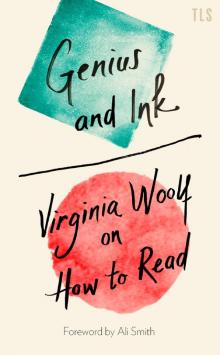 Genius and Ink
Genius and Ink Mrs. Dalloway (Annotated)
Mrs. Dalloway (Annotated)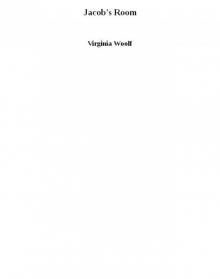 Jacob's Room
Jacob's Room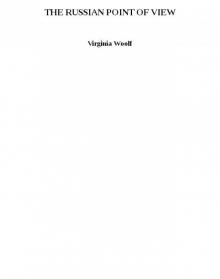 THE RUSSIAN POINT OF VIEW
THE RUSSIAN POINT OF VIEW A Writer's Diary
A Writer's Diary Woolf Short Stories
Woolf Short Stories